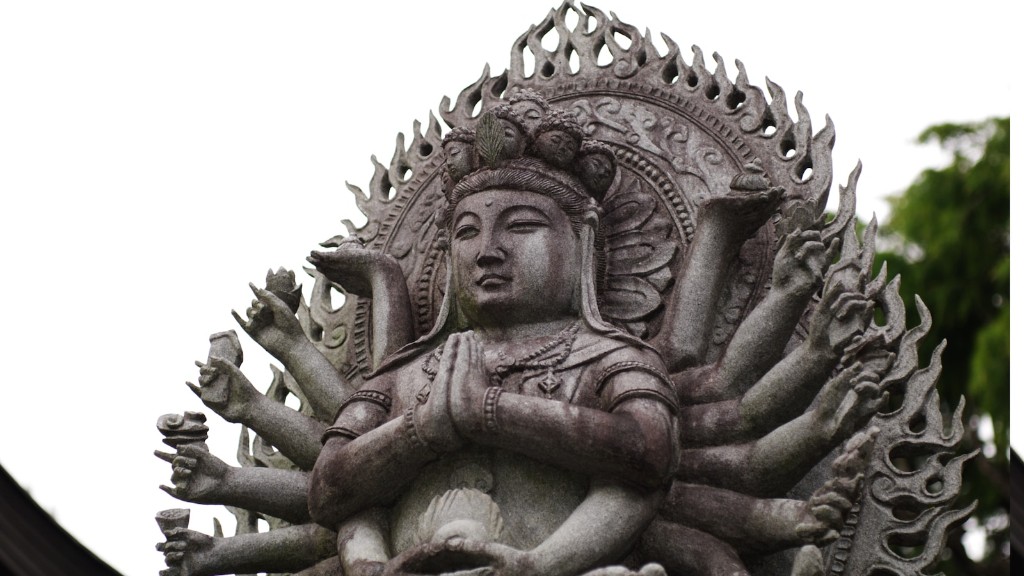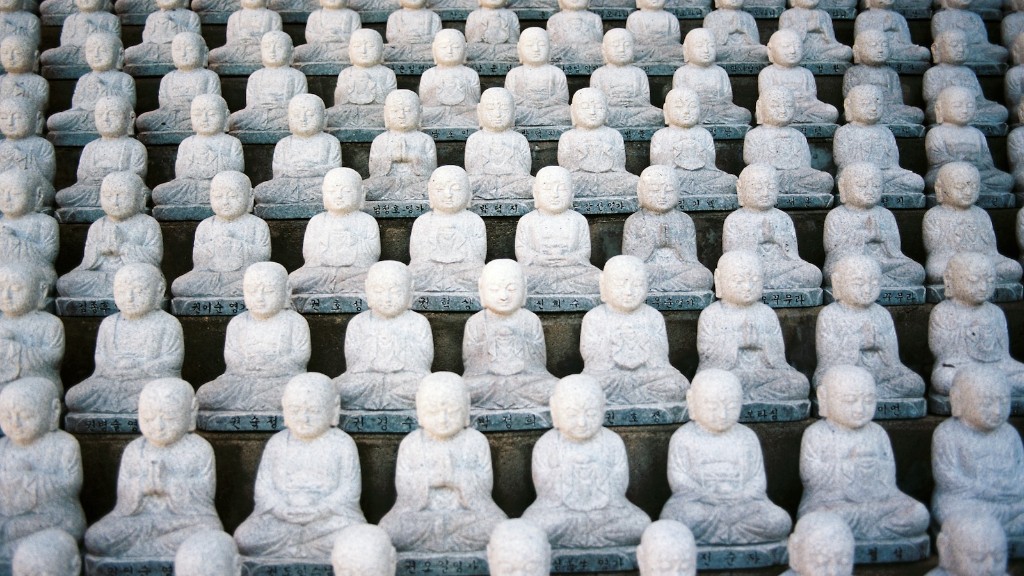Buddhism teaches that attachment is the cause of suffering. The Buddha taught that attachment to things like our possessions, our ideas, and even our own bodies leads to suffering because we are constantly trying to hold on to things that are impermanent. The only way to end suffering is to let go of our attachments.
Attachment in Buddhism refers to the attachments that we have to people, things, and experiences. These attachments can lead to suffering because we become attached to things that are impermanent. This suffering can be alleviated by practicing detachment, which is a key principle in Buddhism.
What are the four attachments in Buddhism?
The four types of attachment are sense objects, opinions and views, rites and rituals, and self-hood. Each type of attachment can lead to suffering if we become attached to things that are impermanent, or to things that we cannot control. When we are attached to sense objects, we may suffer when we lose them or when they change. When we are attached to our opinions and views, we may suffer when we are contradicted or when we cannot have our way. When we are attached to rites and rituals, we may suffer when we cannot perform them perfectly or when we are forced to do things that go against our beliefs. When we are attached to our self-hood, we may suffer when we are faced with our own mortality or when we realize that we are not as perfect as we would like to be.
Attachment is tricky because it can be difficult to know what someone else wants or how to make them happy. However, at its core, attachment simply means wanting someone else to be happy and to feel good. This is in contrast to love, which is about wanting someone else to be happy and to feel good, without any expectation or need for anything in return. If being with someone makes you happy and good, then that’s wonderful. If not, then that’s okay too.
How do Buddhists end attachments
There are a few different things we can do to help us let go of our attachments. One is to meditate, which means to sit still and focus on the present moment. This can help us become more aware of our thoughts and feelings, and learn to let go of them more easily. Another practice is compassion, which means recognizing that we are all interconnected and that everyone is suffering in some way. This can help us have more empathy for others and let go of our own self-centeredness. Finally, we can try accepting expansiveness, which means recognizing that everything is constantly changing and that nothing is permanent. This can help us let go of our attachment to things that we think are important, and realize that they are just part of the ever-changing flow of life.
The Buddhist notion of nonattachment is often misunderstood as meaning that one should not care about anything or anyone. In fact, the opposite is true. The Buddha taught that attachment is the root of suffering, because it leads to craving and grasping, which in turn lead to disappointment and pain. The key is to engage with experience with flexibility and without fixation on achieving specified outcomes.
The present study sought to define, create and validate a new measure of nonattachment as it applies to notions of the self. The findings suggest that nonattachment is a multi-dimensional construct that includes aspects of self-acceptance, self-compassion, and mindfulness. The new measure may be a useful tool for researchers and clinicians interested in studying and promoting nonattachment.
Can you love without attachment?
It is possible to be committed to someone without being attached to them. You can be emotionally connected without becoming dependent on them. If you want to be in a happy and supportive relationship, it is better to focus on loving without attachment.
The Bodhisattva-mahasattva is a being of great compassion who has vowed to help all beings achieve liberation. They are someone who is pure of heart and speech, and who always acts with kind intent. The Bodhisattva-mahasattva is someone who is free from two-facedness and ill-speech, and who has mastered their own mind. They are a being of great loving-kindness, always working for the benefit of others.
How do I know if I love someone or attachment?
Love is a strong, passionate emotion that is often described as a feeling of strong affection and strong attachment. Love is often thought of as a feeling of strong affection and strong attachment. Love is often thought of as a feeling of strong affection and strong attachment. Love is often thought of as a feeling of strong affection and strong attachment. Love is often thought of as a feeling of strong affection and strong attachment.
It is true that romantic relationships do fulfill important needs. However, these relationships are based on love and involve mutual giving and support. You cannot just love someone because they meet your needs. Attachment can develop when needs for intimacy, companionship, validation, or anything else are not met.
Can you love someone and be attached
There is no right or wrong answer when it comes to emotional attachment in love. It is entirely up to the individual couple to decide what level of attachment works for them. For some, a strong emotional connection is an important part of a healthy relationship. For others, a more relaxed approach to attachment may be more comfortable. Ultimately, the key is to communicate openly with your partner about your needs and expectations.
The root cause of all suffering is attachment. When we are attached to something, we suffer when it is taken away from us or when it doesn’t meet our expectations. The only way to end suffering is to end our attachment. There is a path that leads us away from attachment and suffering, and that is the Noble Eightfold Path.
Is love attachment in Buddhism?
According to the Buddha, attachment is the primary source of our suffering in daily life. We often confuse it with love, which is necessarily altruistic and the source of our own happiness and the capacity to help others. However, attachment is based on a self-centered desire for things to be a certain way, and when they’re not, we suffer. Learning to let go of attachment is the key to ending our suffering and finding lasting peace.
These are some of the most serious offences one can commit, and are sure to result in bad karma.
How do Buddhists practice non-attachment
This is a difficult concept for many people to grasp, myself included. We are so used to thinking that if we work hard and do everything right, we will get the results we want. But Buddhism suggests that we need to let go of that attachment to the outcome and just focus on the actions. It’s not about whether we succeed or fail, it’s about what we do along the way.
The Three Poisons are the basic causes of suffering. Greed, ignorance and hatred lead to suffering because they cause us to act in ways that are not in our best interests. Greed leads to suffering because it causes us to want things that we cannot have or that are not good for us. Ignorance leads to suffering because it causes us to believe things that are not true. Hatred leads to suffering because it causes us to act in ways that are not compassionate or loving.
What is the five aggregates of attachment in Buddhism?
The physical senses are the main way that we interact with the world around us. Without them, we would be unable to see, hear, smell, taste, or touch anything. The five physical sense organs are the eyes, ears, nose, tongue, and skin. Each of these organs is responsible for detecting a specific type of stimulus, which is then converted into a signal that the brain can interpret. For example, when we see an object, light reflecting off of that object enters our eyes and is converted into electrical impulses that are sent to the brain, where they are interpreted as a visual image.
If you find yourself thinking that your partner’s life should revolve around you, it’s a sign that you have an unhealthy attachment. This kind of thinking is selfish and will ultimately lead to the downfall of the relationship. It’s important to realize that your partner has their own life separate from you, and that you can’t control everything in their life. Allow them the space to live their own life and you’ll find that the relationship will be much healthier.
How do you detach from someone you love deeply
Identify the reason why you want to let go of the person you love. Is it because of something they did or because of how you feel? If it’s because of something they did, then you need to decide if you can forgive them or not. If it’s because of how you feel, then you need to work on letting go of the emotions you’re attached to.
Release your emotions. Don’t bottle them up inside. Write them down, cry if you need to, but let them out.
Don’t react, respond. When you’re feeling triggered by something the other person does, take a step back and breathe before you respond. This will help you to not react out of anger or hurt.
Start small. If you’re not ready to let go of the relationship completely, start by detachment from the parts that are causing you pain.
Keep a journal. Writing down your thoughts and feelings can help you to process them and to see your progress.
Meditate. Meditation can help you to focus on the present moment and to release attachments to past pain.
Be patient with yourself. Detachment is a process and it takes time. Be gentle with yourself as you’re going through it.
It is crucial for parents to form a strong and loving attachment to their babies. If they do not, their children will be at risk for a variety of emotional, social and learning problems as they go through childhood and into adolescence and adulthood.
Warp Up
In Buddhism, attachment is the strong attachment to one or more people, things, or states of being. This attachment can lead to grasping and clinging, which in turn can lead to suffering. Therefore, it is important to be aware of attachment and to practice detachment.
In conclusion, attachment is one of the key concepts in Buddhism. It is the attachment to things that causes suffering. By letting go of attachment, we can be free from suffering.



